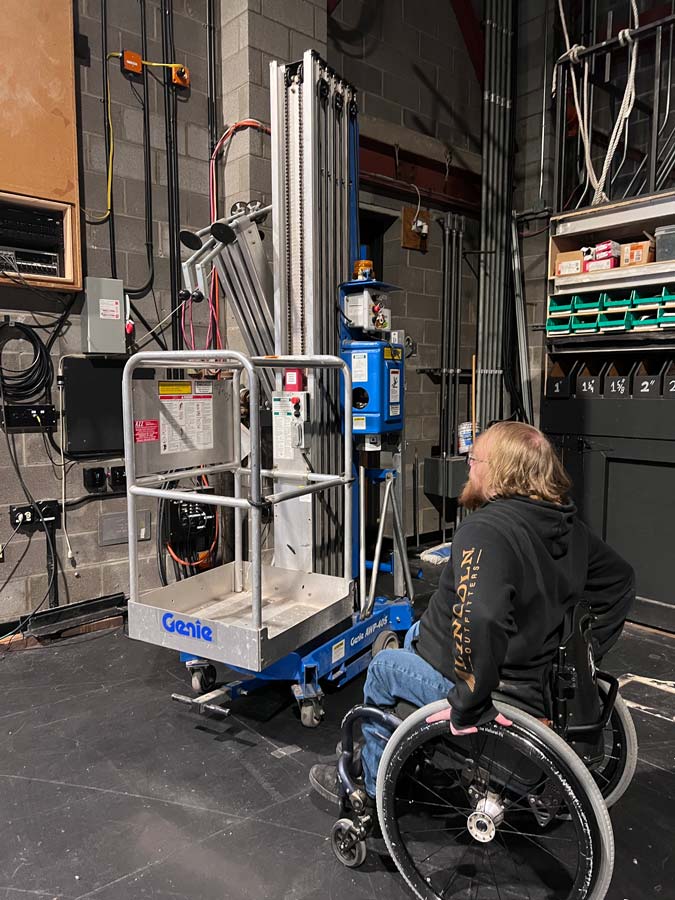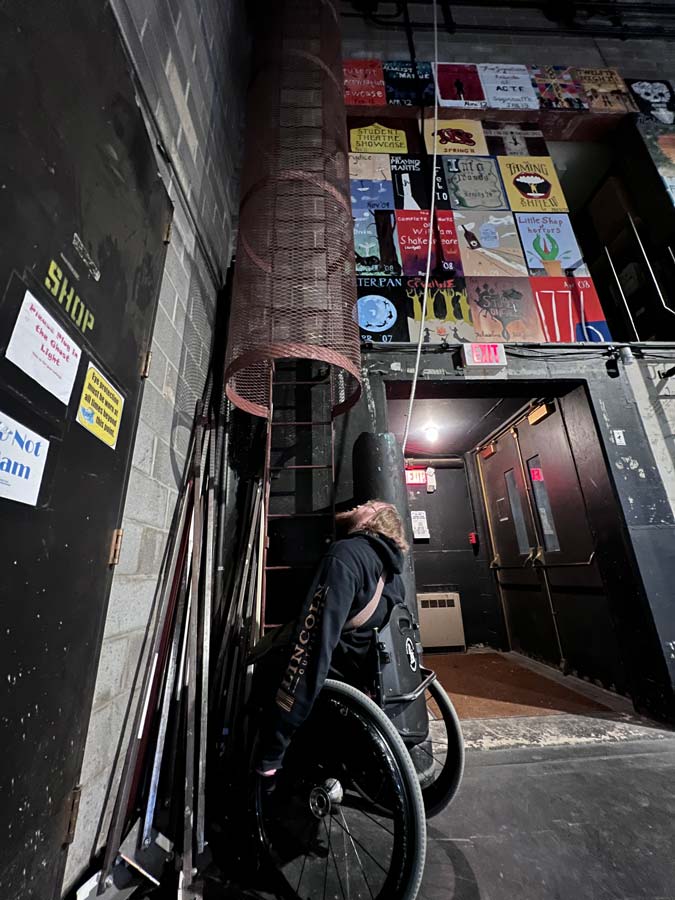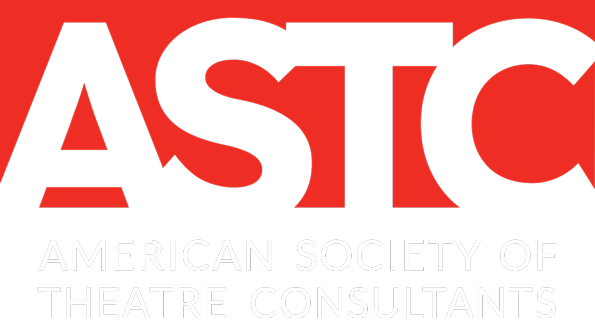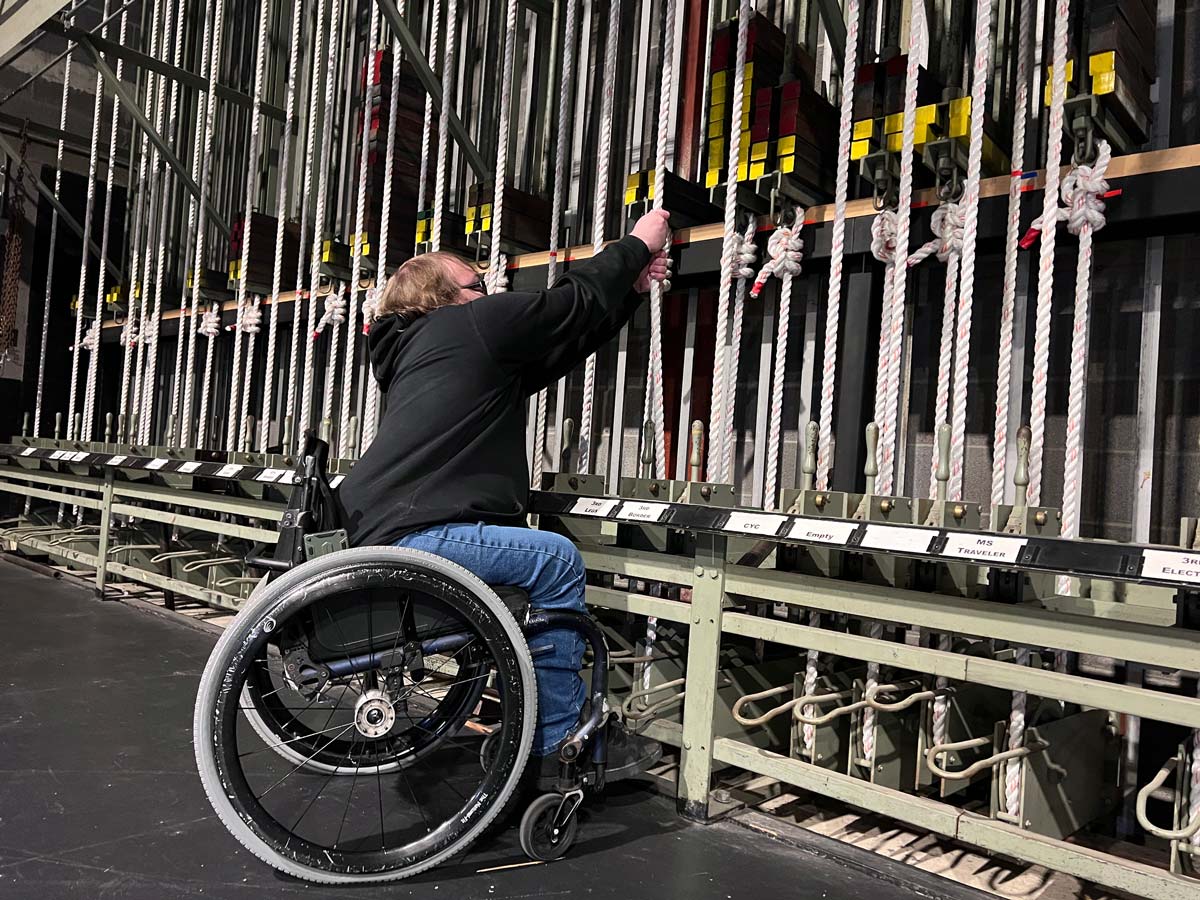Universal Design in the Performing Arts
What exactly is Universal Design? The idea of Universal Design (UD) was first developed in 1997 by architect Ronald Mace of North Carolina State University, in collaboration with a team of architects, engineers, environmental designers, and product developers. From this cohort, the Center for Universal Design was founded with seven key principles of design that aligned with both new construction and renovation to evaluate principal characteristics of the built environment, the products installed, and the services provided, all with a lens towards improving usability for as many as possible. These principles are:
- Equitable Use
- Flexibility in Use
- Simplicity and Intuitive Use
- Perceptible Information
- Tolerance for Error
- Low Physical Effort
- Size and Space for Approach and Use
Much focus had been on the audience and performers in the ways that theatre is presented and consumed, but there has been less attention to other stakeholders who are involved in the utilization, production, maintenance, and day-to-day operation of the venues in which performances are presented. A focus on accessibility, driven by the requirements of the Americans with Disabilities Act (ADA) and resulting standards, often translates into design solutions that meet minimum requirements, but may fall short in providing design that universally considers everyone who interacts within a given venue. Often these decisions tilt towards public accommodations rather than broad approaches using Universal Design to consider everyone who uses a given venue. With a new focus on access for all, theatre planners have a unique opportunity to provide a knowledgeable design voice geared towards equity in the performing arts space that include all participants of a facility – patrons, performers, staff, volunteers, designers, technicians, crew, and visitors alike.

Theatres often depend on personnel lifts, challenging opportunities for those who use wheelchairs. Photo by author
Meeting the unique needs of the individuals who interact within these spaces requires applying a UD lens to look at the various elements of a facility. The intention is not to design special accommodations for a minority of individuals, but to enhance the experience for all through the implementation of good design. By designing for the edge cases, one designs for the center. If the facilities, products, and services are usable, convenient, accessible, and enjoyable, then everyone benefits. This exemplifies the human-centered approach to design and breaks down unspoken barriers that can unintentionally exclude individuals from participating. The level of difficulty can have a wide range that is best informed through designing with users, instead of only for users. For example, one staff member may have no significant challenges with a space, product, or service while another may otherwise be excluded from participation. There is of course a broad spectrum of needs and not all circumstances can be predicted, but intention and conversation around UD principals can impact the most people. There is a saying that if you talk to one person with a disability, you have talked to exactly one person. This reinforces the need for many voices at the table, with unique, authentic, lived experience, to navigate the decisions made.
Developing a solid process early in the project can lead to design decisions that improve outcomes and create the desired welcoming environment. The team should identify the following:
- Best practices in the field.
- Leverage evidence-based design.
- The perspectives of all potential users with respect to age, gender, technology standards, and architectural specifications that match the desired outcomes.
- The diverse characteristics of all potential users for each application regarding gender, age, physical abilities, and limitations, etc.
- The challenges and apply the best solutions to accommodate as many as possible.
- When a solution does not suit all potential users, consider alternate accommodations in an equitable fashion to provide access.
Then the team must test, iterate, and evaluate potential solutions applying a design thinking methodology that demonstrates the desired outcomes to provide the best universal design for all.

Straight ladders are ubiquitous in theatres, but limit participation by technicians who use wheelchairs. Photo by author.
By Raymond Kent, ASTC, Assoc AIA, LEED BD+C
Disclaimer: Any views or opinions expressed in this article are solely those of the author and do not necessarily represent those of the American Society of Theatre Consultants. This article is for general information only and should not be substituted for specific advice from a Theatre Consultant, Code Consultant, or Design Professional, and may not be suitable for all situations nor in all locations.



